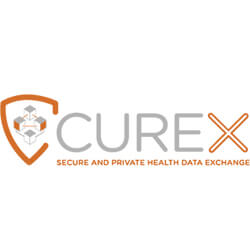CUREX is motivated by the current vulnerability of health sector’s infrastructures to threats related to privacy and cybersecurity. The main goal is to produce a novel, flexible and scalable situational awareness-oriented platform that can address comprehensively the protection of the confidentiality and integrity of health data focusing on health data exchange cases. CUREX is fully GDPR compliant by design. At its core, a decentralized architecture enhanced with a private blockchain infrastructure ensures the integrity of the risk assessment process and of all data transactions that occur between the diverse range of stakeholders involved. Crucially, CUREX places emphasis also on improving cyber hygiene through the recommendation of strategies and methodologies for training and raising awareness activities for a healthcare institution’s personnel. The platform components aim to support risk assessment focusing on both, privacy and cybersecurity, safeguard measure recommendations and cyber hygiene improvement. The risk assessment is based on advanced technical solutions that can record and monitor the assets, devices and services that have access and are related to personal data combined with vulnerability databases.
Finally, the platform comes with specific end-user applications for both patients and health professionals. AUTH is a key technical partner of the project, being responsible, among others, for the data management infrastructure and the knowledge extraction analytics component.
This project has received funding from the European Union’s Horizon 2020 Research and Innovation Programme under Grant Agreement No. 826404


Title: CUREX: seCUre and pRivate hEalth data eXchange
Grant Agreement No: 826404
Topics: SU-TDS-02-2018 - Toolkit for assessing and reducing cyber risks in hospitals and care centres to protect privacy/data/infrastructures
Duration: 01/12/2018 - 30/11/2021
Funded under: H2020-EU.3.1.5.1.
Funding Scheme: RIA - Research and Innocation Action
Overall Budget: € 4.987825
Coordinator: University of Piraeus Research Center, GR
